
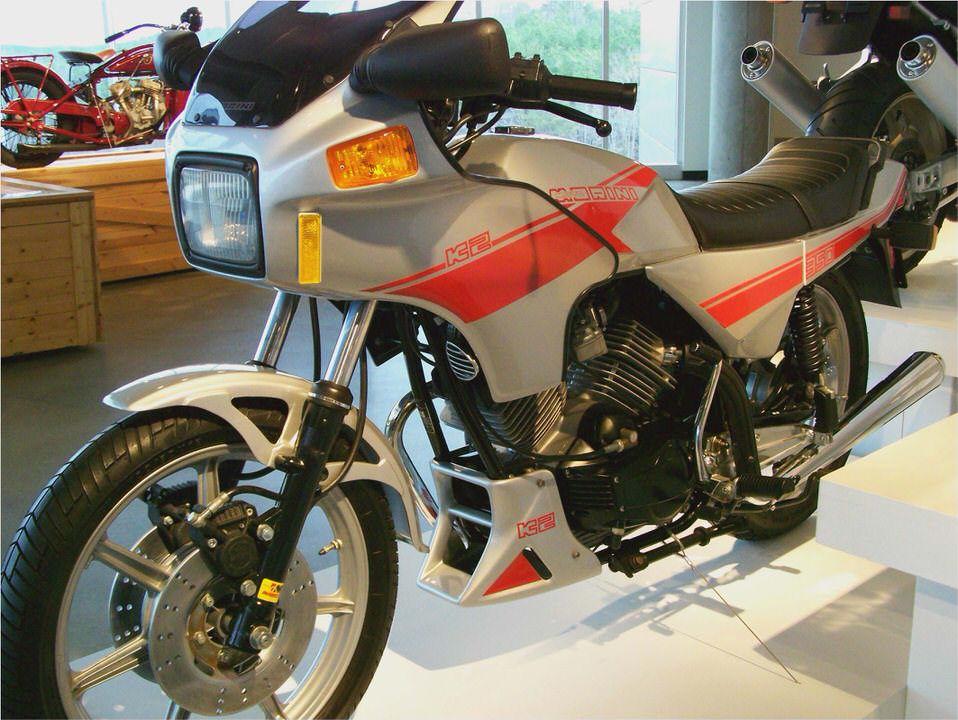
Related Content
1906 Curtiss V-twin
A 1906 Curtiss V-twin on display with other classic motorcycles at the National Motorcycle Museum in.
Barber Bikes at the Museum of Design Atlanta
The Museum of Design Atlanta has launched a new exhibit putting the spotlight on classic Italian Mot.
The Whizzer Sportsman
Art White tells reader Jack Jines about his childhood experiences with the prototype Whizzer Sportsm.
Motorcycle Poll: Which classic V-twin would you buy?
Ahh, the classic V-twin; simple, strong, it’s a template for the ages. For many people, Harley-Da.
1975 Moto Morini 3-1/2 Sport
Years produced: 1972-1987
Claimed power: 39hp @ 8,500rpm
Top speed: 107mph (period test)
Engine: 344cc air-cooled 72-degree V-twin
Weight (half tank fuel): 353lb (160kg)
Price then/now: $1,795 (1974)/$3,500-$4,500
John Burkhard likes his Moto Morini 3-1/2. Not because it’s rare (it is) or unusual (that too) but because it’s a joy to ride. “It’s a rev happy, great handling, great stopping motorcycle. It’s a keeper,” John says of the first Moto Morini 350 V-Twin.
Never heard of a Moto Morini? You’re not alone. Although this northern Italian company has been constructing interesting motorcycles since 1937, Morinis have never been built in large numbers, and only a few ever made their way to the United States.
Morini beginnings
Alfonso Morini started out repairing motorcycles before World War I. Following the war, he partnered with Mario Mazzetti to build two-stroke lightweights on which Morini, an accomplished rider, won numerous races under the Morini-Mazzetti name. The partnership broke up in 1937, at which point Morini established Moto Morini, building commercial three-wheelers in Bologna, Italy.
Morini’s factory was destroyed during World War II, but he gathered up the pieces and was back in business by 1946, building 125cc two-wheelers. Morini designed its first racing four-stroke single in 1949, and during the Fifties and Sixties fielded an international racing team in the lightweight class, with Giacomo Agostini and Tarquinio Provini in the saddle at different points. In the mid-Sixties, Morini started exporting its lightweights to the United States.
Gabriella Morini, Alfonso’s daughter, took control of the company after her father’s death in 1969, becoming one of the few women ever to manage a motorcycle factory. In 1970, she convinced Franco Lambertini to leave Ferrari to work for Moto Morini, where he proved himself an innovative designer.
The Moto Morini 3-1/2 GT was the first Lambertini design to come, displayed at the Milan show in 1971 and on the market in the spring of 1973. Lambertini envisioned the 3-1/2 as one of a series of modular motorcycles, and in addition to the 350 twins Morini produced 125 and 250 singles to Lambertini’s designs.
In 1974, the Herdan Corporation started importing Morini 3-1/2s to the United States. Herman Baver, the spark plug behind Herdan, still runs the company. At the time, he was a Triumph dealer and an importer of accessories from Europe. Baver says Ivan Boyson, an aftermarket manufacturer, brought Morini to his attention. “I read about Morinis in a magazine, then called the factory.
I couldn’t understand what they were talking about, so I went over there and worked out a deal,” Baver recalls.
Herdan was (and is) a small company. “It was tough,” Baver remembers. “I worked hard, though, and eventually had one or two dealers in almost every state. I never had a problem with parts — that was the main thing. I knew there was going to be a problem if I couldn’t supply parts.”
When the Moto Morini 3-1/2 hit these shores in late 1974, it was available in two versions: the Sport (or Café Special) with a large twin-sided drum brake, clip-on bars and an excellent solo seat, and the Strada (or Standard) with slightly less power, a dual seat and touring bars. Italian motorcycle enthusiasts and period American motorcycle magazines were captivated by the peppy little 350.
Morinis in the U.S.
This import was very different from the typical midsize bike of the era. To begin with, the Morini’s 344cc engine was a 72-degree V-twin, decidedly different from what most buyers were used to. With a unique exhaust note, good torque and smooth power delivery, its engine was unique on the market.
While overhead cam engines were the talk of the day, valves on the 3-1/2 were pushrod operated, due to a lack of development money; but the top end was otherwise quite unusual. Heron heads, where the combustion chamber is machined into the piston instead of the cylinder head, were popular on racing cars of the 1960s. So it was natural for Lambertini, with his automotive background, to use them on the Morini.
Another automotive idea incorporated into the new design was a toothed timing belt driving the camshaft, a first for a motorcycle engine. The lower end featured a wet sump and a one-piece crankshaft with automotive-style, bolt-together connecting rods riding on plain bearings. The transmission was a six-speed, fed through a dry clutch.
These innovative components added up to a 353 pound (with a half-full tank of gas), 39 horsepower motorcycle (Sport version) that developed 24.8 foot/pounds of torque. Testers appreciated the peppy engine, the precise gear changes from the six-speed box, the light clutch and the excellent handling. “Once clear of the snarls of city and traffic, the Morini starts smiling, as does the rider,” said Cycle World in an August 1977 test report.
While testers generally liked the 3-1/2, it did have some issues. Many pointed out the lack of an electric start and the bike’s awkward ignition switch located under the left rear side of the gas tank. And while the bike started easily enough, it took forever to warm up.
However, the main problems the Morini 3-1/2 had, at least in the U.S. market, were cultural and economic. While adult enthusiasts in Europe might be drawn to a sporty 350, in the U.S. a 350 was what a kid rode — or worse, a “girl” — and it was expected to be cheap and undemanding. In 1974 the Sport listed at $1,795.
At the time, that kind of money would buy a nice used Honda CB750 or a brand new CB550 Four, with a few bucks left over for insurance.
Rider magazine found the Strada version of the Morini twin durable and easy to maintain on an extended trip. It was, they thought, a miniature touring machine that combined great looks, excellent gas mileage and excellent handling. Despite all this, most testers felt obligated to soften their enthusiasm for the Morini because of its price, considered way up there for such a “little bike.”
Shortly after the 3-1/2 appeared in America, Morini introduced a 500cc version of the twin, which was also imported to the U.S. Sales got a short-lived jump-start when Playboy magazine featured a Morini among its bunnies in one issue. “Things went crazy for a few weeks,” Baver remembers.
The 3-1/2 changed little over the 15 years it was built. A front disc brake was added in 1977, and an electric starter appeared in the early Eighties. However, as the 1980s wore on, sales, never huge, started dropping. In February 1987, Gabriella Morini threw in the towel and sold Morini to Cagiva.
Aside from developing a few models like the odd Moto Morini Dart, Cagiva ultimately showed little interest in producing motorcycles under the Morini name, and the brand went moribund until 1999, when a nephew of Alfonso Morini bought the name back in partnership with the Berti family.
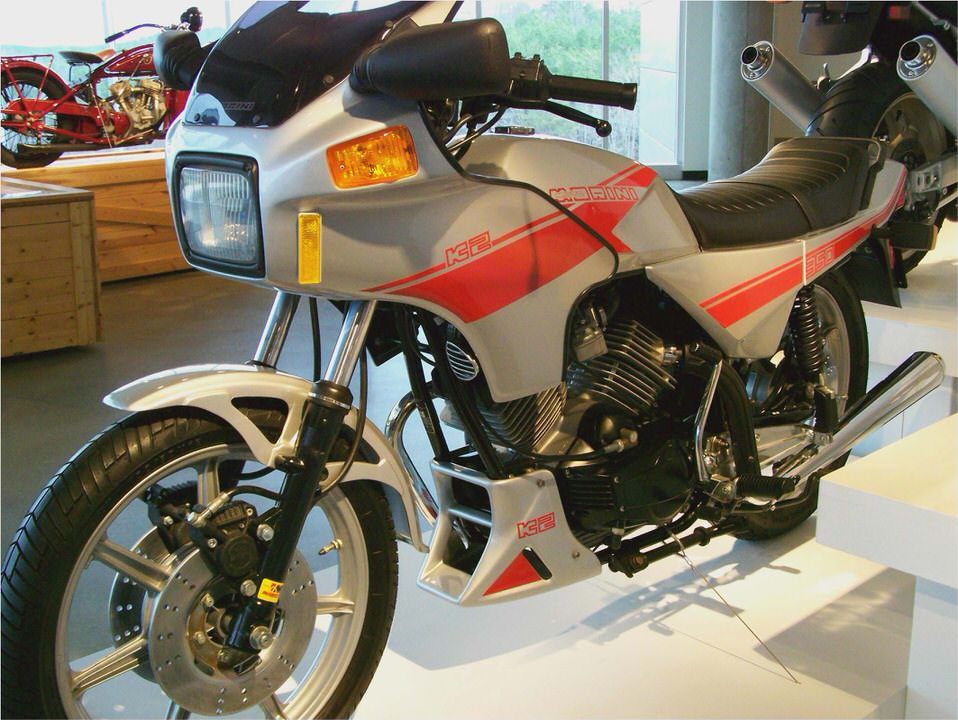
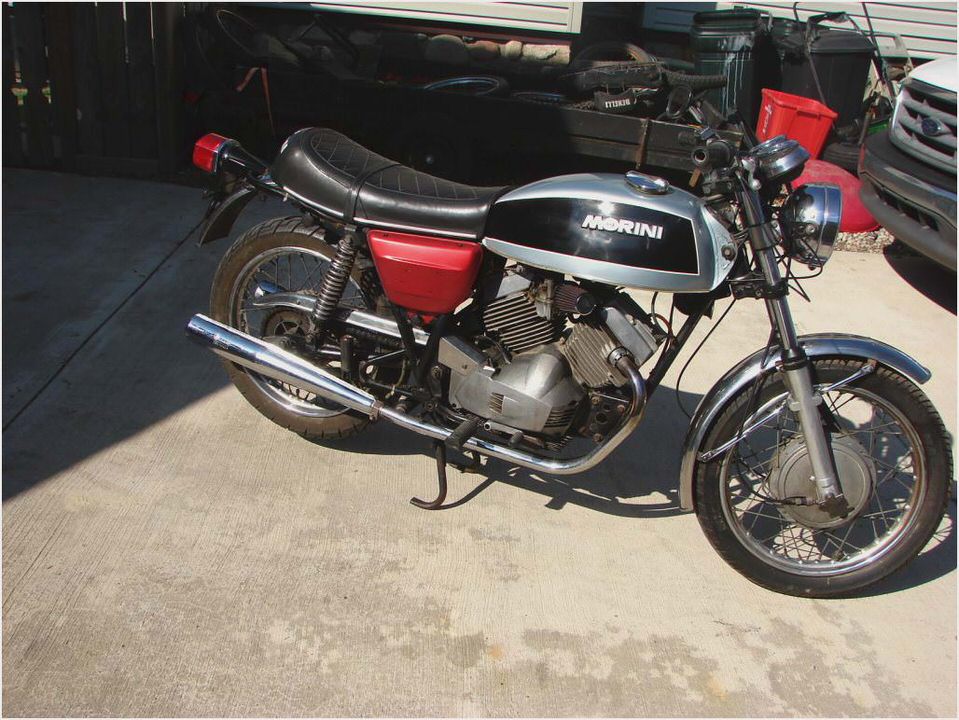
In 2005, the Corsaro and the 9-1/2, the first new Moto Morinis in 17 years, appeared. Like the 3-1/2, these 1,200cc fuel-injected V-twin sport bikes were designed by none other than Franco Lambertini. Like his previous bikes, the new Morinis quickly acquired an excellent reputation, and even sold well until the economic downturn in 2008 and 2009.
At this point in time, Moto Morini is in economic difficulty and looking for a buyer.
Back to basics
Despite the sale of Morini to Cagiva, the Herdan Corporation kept busy supplying parts to American Moto Morini fans — and running a small hotel. John Burkhard, a collector of Italian motorcycles, learned about Morinis from a long-time fan. “I like Italian bikes in general, and Morinis are such cool looking bikes. Someone told me about this particular bike, and I pursued it. I made the owner an offer, but it was not accepted.”
The owner had been a dealer, and said he liked the revvy engine too much to part with it. Two years later, however, he called John. “He said he had sold his house and was moving to Oregon,” John recalls. “He said he could get his Norton in the van, but not the Morini, and asked if I still wanted the Morini. I said I would come get it!”
Retrieving his “new” Morini, John realized the bike had been repainted with a rattle can. Yet aside from the amateur paint job, everything else was original and correct. John started riding the bike, and was very happy with it for a few months — until he started hearing a noise from the engine.
Unsure what it was, he had pal Andy Saunders, a well known motorcycle journalist who also happens to be good at diagnosing engine ills, give it a listen. “He said it was a crank knock,” John recalls.
There are, as you might imagine, few Morini mechanics out there, but luckily John was able to split the engine case on his own. The original owner had the factory manual and most of the factory tools, and he sold them to John along with the bike, which made disassembly and reassembly easier. “I looked at everything. A bearing was sloppy, but a friend machined a new crank bushing, which took the play out of the crank,” John says.
Still, as all mechanics know, even with the best set of tools and information, things can and will go wrong.
“I wanted to ride the bike on that year’s Moto Melee ride,” John remembers, “so I was up ‘till 1 a.m. the morning before the ride. I put in all new seals and gaskets, assembled the motor, installed it and went to bed. The next morning, I found I only had sixth gear.
I took another bike.” Some days after the ride, he disassembled the Morini’s transmission and found he had put the gear selector in backwards. “It’s very easy to do — the two sides look almost identical. I put it back together, and it’s been a happy runner ever since.”
John had the bike repainted in the stock colors, and it is all original except for the rearsets. “The original owner made them himself; they look stock, are well thought out and work well. I decided to keep them.” Shifting is right side, one up and five down, as was common on Italian bikes before DOT regulations mandated left side shift and down for first.
John does not baby this twin — he rides it hard. “I can cruise all day at 75mph,” he says. The only other problem he has had was a failed ignition coil. “I rewound it myself and it works flawlessly.” Otherwise, the Morini is still running on the original wire and switches, contrary to the reputation of Italian electrics for falling apart at a moment’s notice.
Starting is simple, as John explains: “When it’s cold you use the chokes. Find neutral, gas on and it will fire reliably on the third kick.” However, the Morini takes quite a while to warm up, and won’t idle until it is warm.
Once up to temperature, the 3-1/2 is a happy partner to the sporting motorcyclist, and easy to control in traffic. “It revs quick, like a two-stroke,” John says. “The controls are a little awkward, and you will hit the brakes before you find the horn,” he continues. “And it’s got a big front drum brake. It’s not the lightest of brakes, but it works well and I’m happy.”
The original springing — Marzocchi front and rear — still has plenty of life and the Morini will perform adequately on dirt roads. On the highway, it has little vibration, but John points out the difference in size between the 3-1/2 and everything else on a six-lane road can leave a rider feeling intimidated. “You are a small moving object in a very large world.”
Maintenance is similar to a modern bike — after all, the Morini has electronic ignition. There’s just more of it. The Dell ’Orto carbs seem to go out of tune more often, and the bike needs more frequent oil changes than modern machines.
John estimates he changes the oil every 1,000 to 1,500 miles and tunes the carbs every 2,000 miles. He also changes the cam belt every couple of years. Aside from cleaning off the road grime and keeping an eye on the remaining tire tread, that’s about it. “Things don’t tend to rattle loose,” he says. “It’s a joy to ride.
It’s fun and unique — and you won’t see another one coming at you. It’s a keeper.” MC
Resources:
Read more about the motorcycles mentioned in this article:
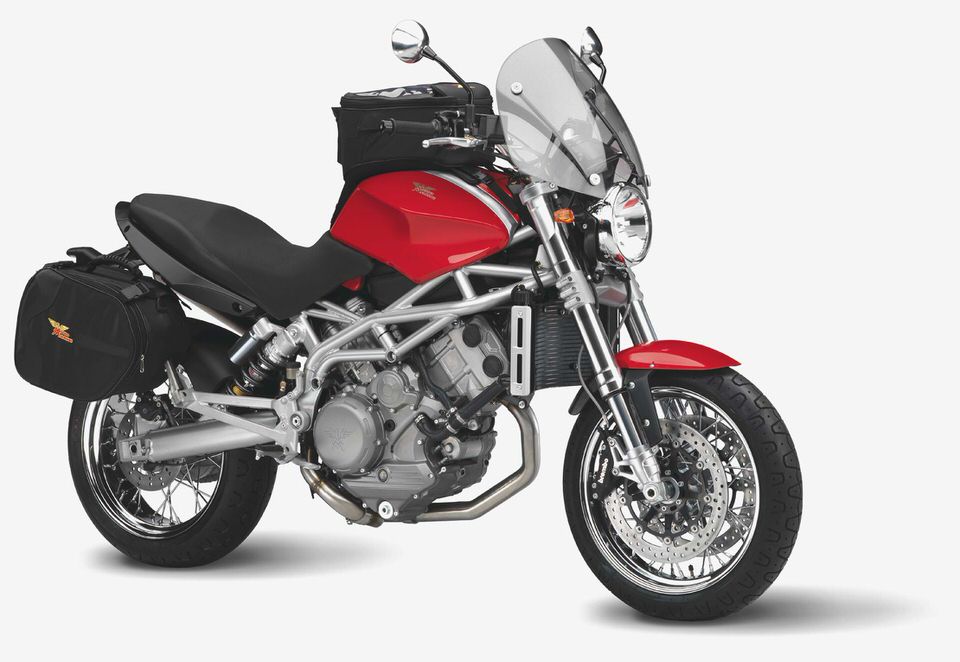
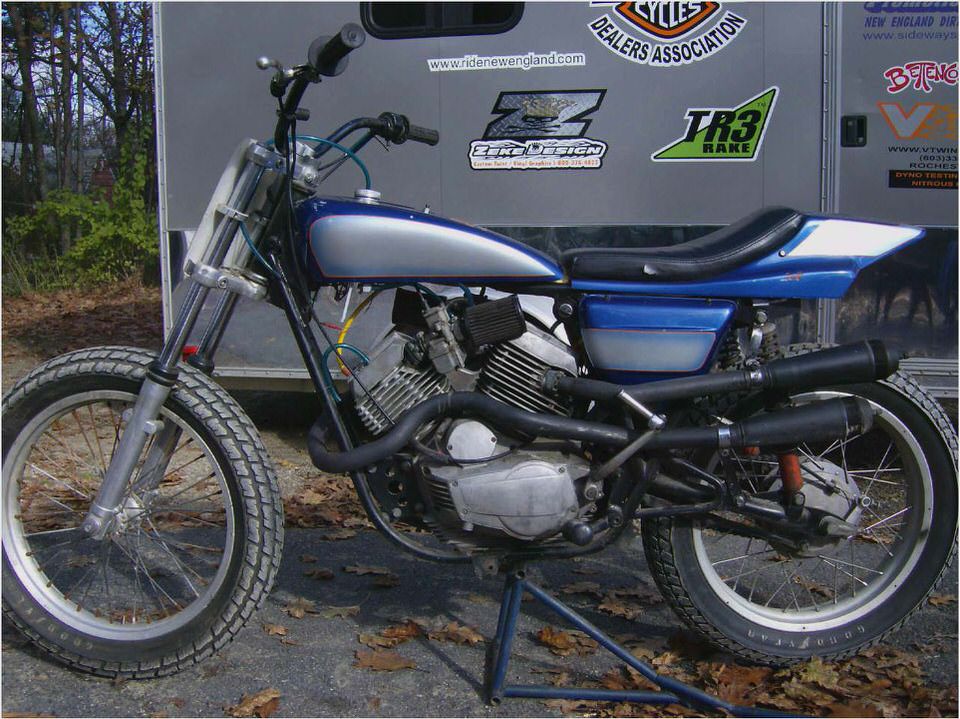
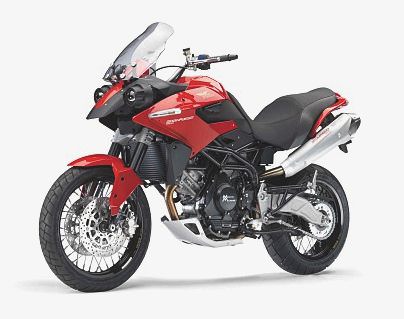
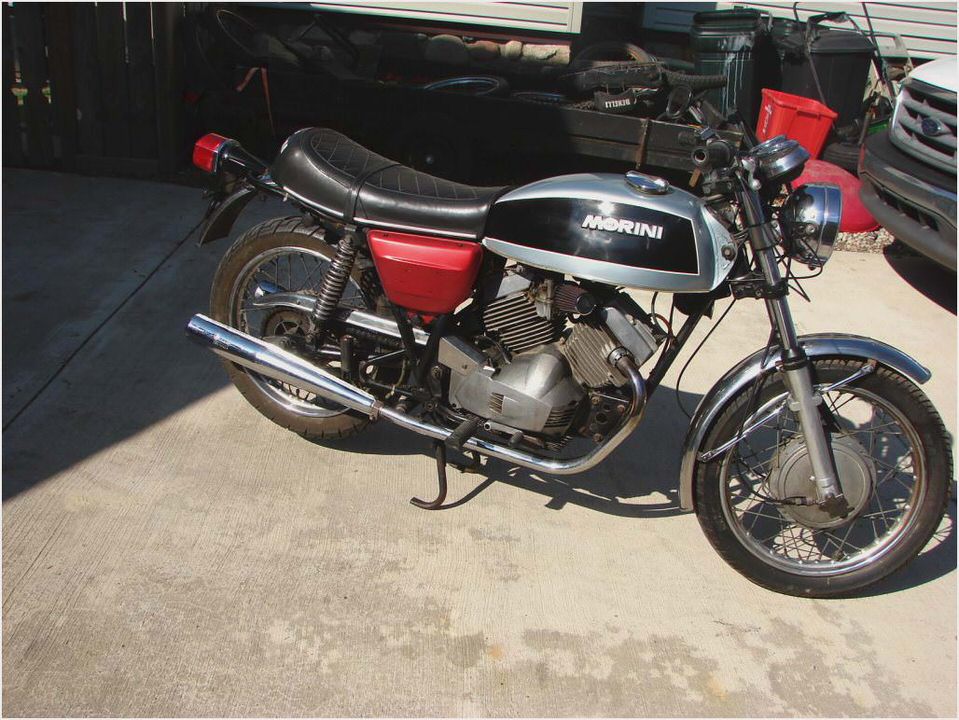
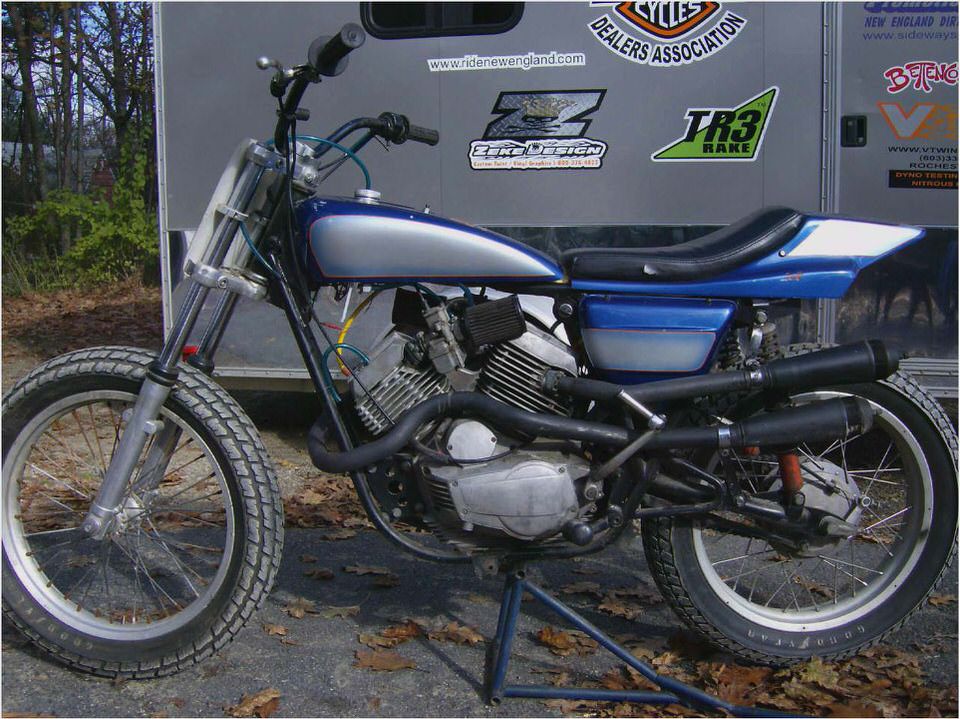

- Retro Ride Moto Morini 500 Twin
- Vardenchi Goes From Customs To Imported Motorcycles; Morini Sales To Start…
- Moto Morini Rare SportBikes For Sale Page 2
- 2012 Moto Morini Granpasso H83 motorcycle review @ Top Speed
- First Ride: Moto Morini Rebello 1200 – Cycle News
